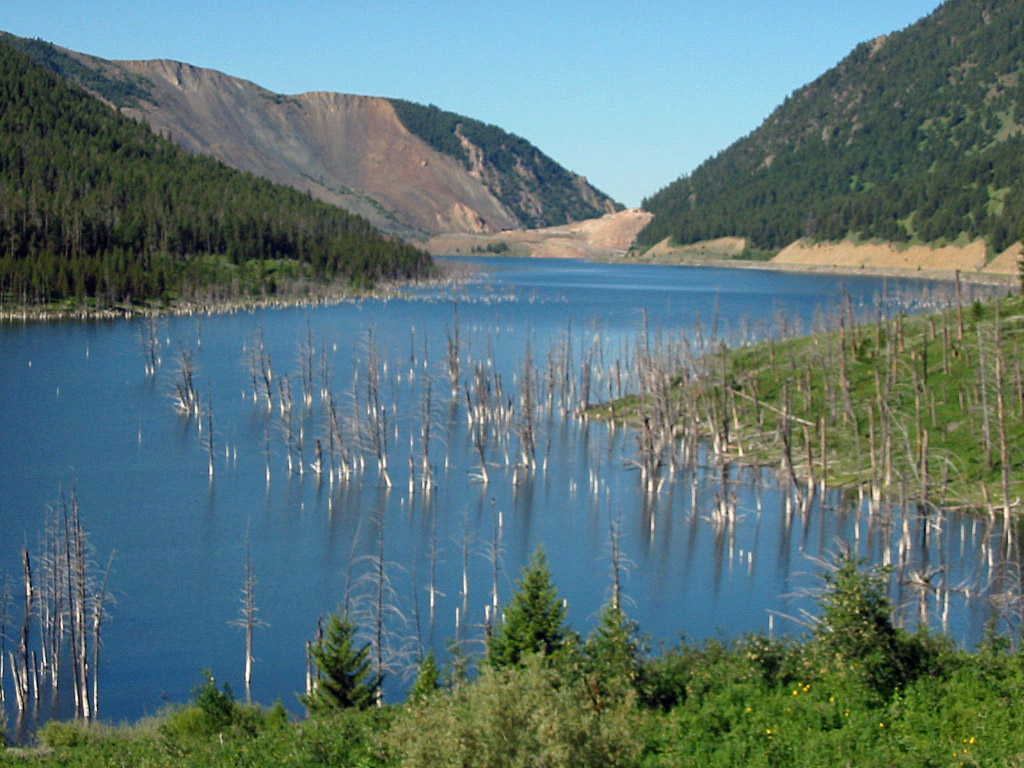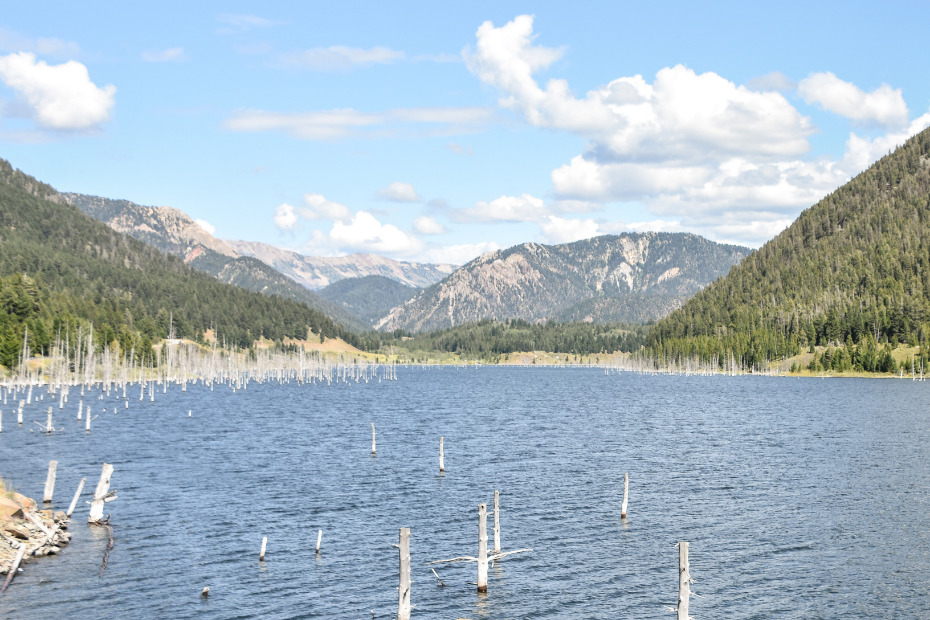
Within mere seconds, the ground plunged downwards along the fault line, leaving behind a sheer 20-foot wall of exposed earth.

The initial quake lasted less than a minute. Just before the foot of the canyon sat Rock Creek Campground, a then-popular resting ground for tourists visiting Yellowstone National Park. At the foot of the canyon, the river dropped in elevation, entering the expansive Madison Valley. On either side of the timber-laden valley sat steep slopes coated with rocky outcroppings and dense forest. Prior to the quake, the Madison flowed from the dam outlet through a tucked-away canyon of the Madison range toward Ennis. Flowing both in and out of the lake is the Madison River, world renowned for its blue-ribbon fly-fishing. The Hebgen Dam, completed in 1914, sits at the head of the canyon barely out of sight of Highway 287. Today, the Madison River Canyon stretches for several miles west of Hebgen Lake, a large, manmade reservoir. It still is among the largest recorded in the United States, and the effects of the quake are still observed today. At its time, it was the second-largest recorded earthquake in the continental United States in the 20th century. 17, 1959, the 7.5-magnitude Hebgen Lake Earthquake hit southwest Montana. Prepare your vehicle, and dress accordingly.įor information: Gardiner, the Park Hotel Yellowstone, West Yellowstone’s Stagecoach Inn, / Yellowstone Park’s Mammoth Hot Springs Hotel and Old Faithful Snow Lodge are the only winter lodging choices (/) the campground at Mammoth is open year-round Yellowstone National Park, nps.gov/yell/planyourvisit/ late summer night, thousands awoke to a horrific nightmare: an enormous force rattling the ground beneath them. When we departed the final morning, our snowcoach had to honk and delay, awaiting 60-some sleeping elk to rouse themselves and move.Ī word to the wise - on that trip, a few years earlier, we spent the night in West Yellowstone when the temperature reached 40 degrees below zero. Morning walks or ski trips took us to the Firehole River, where snow geese cruised and huge bison wandered through the geyser basins. A few years ago, we took the snowcoach to Old Faithful and spent three lovely nights at the Old Faithful Snow Lodge, a modern hotel with dining room, and just blocks to the Old Faithful geyser. Just beyond the visitor center, we came upon a bighorn sheep jam, with about 80 bighorns on the rocky promontories and a dozen crossing the highway.Ī variety of concessionaires offer guided tours in snowcoaches, as well as snowmobile tours into the park, all the way to Old Faithful. It’s a somber place to visit, with visitor center memorializing the victims set high on the mountain slide that sent boulders the size of houses 800 feet up the other side the canyon. Our final day before heading home, we toured out of West Yellowstone 25 miles northwest to the Earthquake rea, where a huge 1959 earthquake brought down the side of a tall mountain, burying 28 campers, damning the Madison River and creating Quake Lake. West Yellowstone, frequented by snowmobilers, is a lively place, with busy restaurants and bars. Cross-country ski and snowshoe trails extend along the park’s western edge, and the Riverside Trail takes one down to the Madison River where both elk and bison are frequently spotted. Just amazing luck and a marvelous photo opportunity!ĭeparting the Mammoth area, our destination was West Yellowstone, Montana, and several nights at our favorite hotel, the Stagecoach Inn.

On our final day in the Mammoth area, we again ventured into the park on a sunny, mild morning, and, amazingly, found again the same wolf-pack, this time on the other side of the river and just 150 yards from the road. We pulled out our binoculars and joined the show, these classic animals looking like large Huskies - stunning! They were watching a 10-11 member wolf pack taking in the mid-day sun and going about their business.
#HOT SPRINGS QUAKE LAKE PROFESSIONAL#
We continued east into the heart of the Lamar Valley, offering frequent wolf sightings throughout the year again, not our morning to see wolves - but lovely, snowy vistas were our reward.īacktracking at mid-day, still inside the park and just 2½ miles from our hotel, we came upon a several block-long “wolf jam”, where scores of vehicles were pulled off the highway and what appeared to be over 100 amateur and professional photographers, with huge telephoto lenses, transfixed on a bluff high above the Gardiner River.

From the Mammoth area, on our first early-morning, we drove about 20 miles east on Montana Highway 212 (open in winter all the way to the Northeast/Cooke City entrance) near Tower Junction, we spotted a gaggle of tourist photographers at a roadside pullout and found they were closely watching a wolf den just 80 yards down into a steep gulch alas, no wolves evident in the 20 minutes we spent there.


 0 kommentar(er)
0 kommentar(er)
